Common Name(s): Movingui, ayan, Nigerian satinwood
Scientific Name: Distemonanthus benthamianus
Distribution: West Africa
Tree Size: 100-125 ft (30-38 m) tall,
3-5 ft (1-1.5 m) trunk diameter
Average Dried Weight: 45.1 lbs/ft3 (720 kg/m3)
Specific Gravity (Basic, 12% MC): 0.58, 0.72
Janka Hardness: 1,280 lbf (5,680 N)
Modulus of Rupture: 18,740 lbf/in2 (129.2 MPa)
Elastic Modulus: 1,773,000 lbf/in2 (12.23 GPa)
Crushing Strength: 8,890 lbf/in2 (61.3 MPa)
Shrinkage: Radial: 3.5%, Tangential: 5.7%,
Volumetric: 10.0%, T/R Ratio: 1.6
Color/Appearance: Yellow to orangish brown, darkening with age. Frequently exhibits figured grain patterns such as mottle or curl.
Grain/Texture: Grain can vary from straight to interlocked to wavy. Texture is fine and even, with a good natural luster.
Rot Resistance: Rated as moderately durable; moderate termite resistance.
Workability: Generally the wood is easy to work, though movingui can have up to 1.3% silica content by weight, which may result in moderate to severe blunting effects. Quartersawn surfaces are inclined to tearout during planing, and charring of the wood may occur during drilling. Movingui glues, stains, and finishes well. Responds moderately well to steam bending.
Odor: Movingui has a mild odor when being worked.
Allergies/Toxicity: Although severe reactions are quite uncommon, movingui has been reported to cause skin irritation. See the articles Wood Allergies and Toxicity and Wood Dust Safety for more information.
Pricing/Availability: Usually available as veneer; solid lumber is also occasionally available. Cost is in the mid to upper range for an imported hardwood, with higher prices for figured pieces.
Sustainability: This wood species is not listed in the CITES Appendices, and is reported by the IUCN as being a species of least concern.
Common Uses: Veneer, cabinetry, furniture, and flooring.
Comments: As with so many other lustrous, yellow-colored woods, movingui is frequently referred to as satinwood—more specifically, Nigerian satinwood. However, the satinwood moniker is properly reserved for Chloroxylon swietenia and Zanthoxylum flavum.
Historically, the wood has been sold under the name ayan. But regardless of its name, the wood itself can have a rather vibrant yellow color, with a highly pronounced mottle figure, making it a favorite for veneering and applications used for accents.
Images: Drag the slider up/down to toggle between raw and finished wood.
Identification: See the article on Hardwood Anatomy for definitions of endgrain features.
Porosity: diffuse porous
Arrangement: solitary and radial multiples
Vessels: large, few; yellowish brown deposits occasionally present
Parenchyma: winged, lozenge, confluent, and sometimes banded (occurring as wavy diagonal bands)
Rays: narrow to medium width (though usually not visible without magnification); normal spacing
Lookalikes/Substitutes: Afrormosia (Pericopsis elata) is another West African hardwood that can have a similar appearance and weight. Movingui tends to have slightly larger pores, more extensive confluent parenchyma, as well as water-soluble yellow heartwood extractives. Movingui can also be confused with many types of satinwood, which is discussed in more detail in the article Sorting Out Satinwoods.
Notes: Heartwood contains yellow-colored extractives that are readily leachable in water.
The genus name Distemonanthus comes from the Greek and means flower with two stamens.[1]Flynn, J. H., Kline, M., & Arno, J. (2001). A guide to useful woods of the world. Forest Products Society, Madison, Wisconsin. 208. It contains only one species, D. benthamianus.
Gene sequencing has show that the next-closest genus is the South American Apuleia,[2]Bruneau, A., Mercure, M., Lewis, G. P., & Herendeen, P. S. (2008). Phylogenetic patterns and diversification in the caesalpinioid legumes. Botany, 86(7), 697-718. again containing only one species, garapa (Apuleia leiocarpa).
Related Content:
References[+]
| ↑1 | Flynn, J. H., Kline, M., & Arno, J. (2001). A guide to useful woods of the world. Forest Products Society, Madison, Wisconsin. 208. |
|---|---|
| ↑2 | Bruneau, A., Mercure, M., Lewis, G. P., & Herendeen, P. S. (2008). Phylogenetic patterns and diversification in the caesalpinioid legumes. Botany, 86(7), 697-718. |

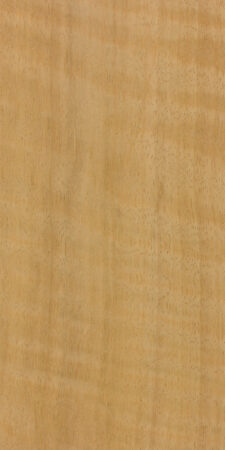
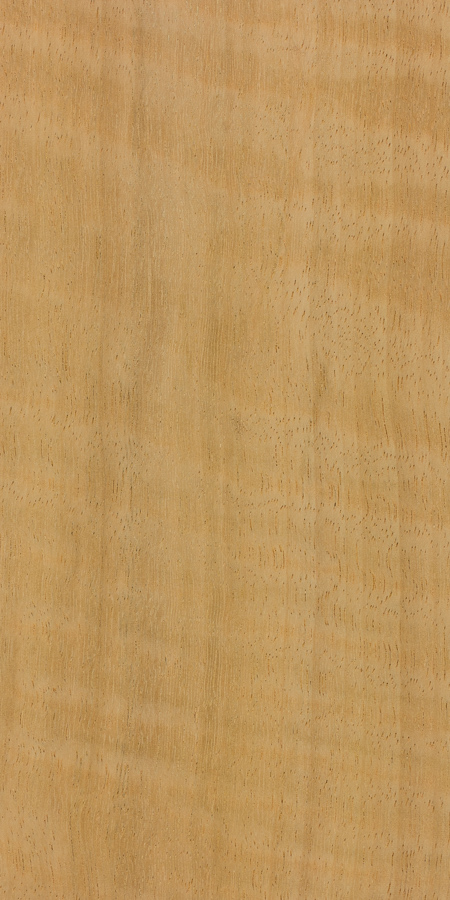
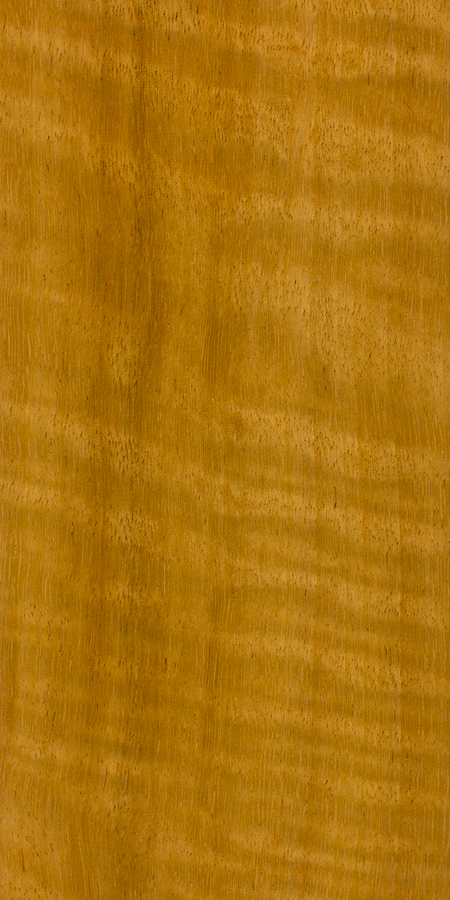
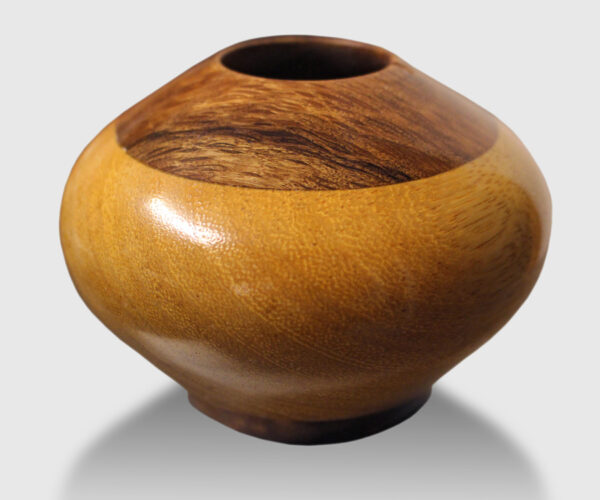
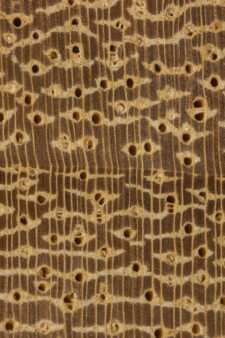

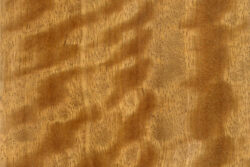


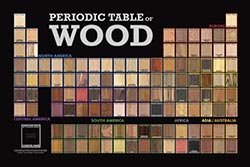




Ohhhh Movingui is a gorgeous wood! The picture does not even come close to showing how truly beautiful it is. The bright yellow blank these came from had such incredible fiddle-back chatoyance to it, it was unreal how much of a tiger-eye effect it had. The silica content did cause the bandsaw blade to break after cutting it a few times (it was a high quality blade too) but it was worth it in the end to create two of these gorgeous grips. The customers who got them were ecstatic.